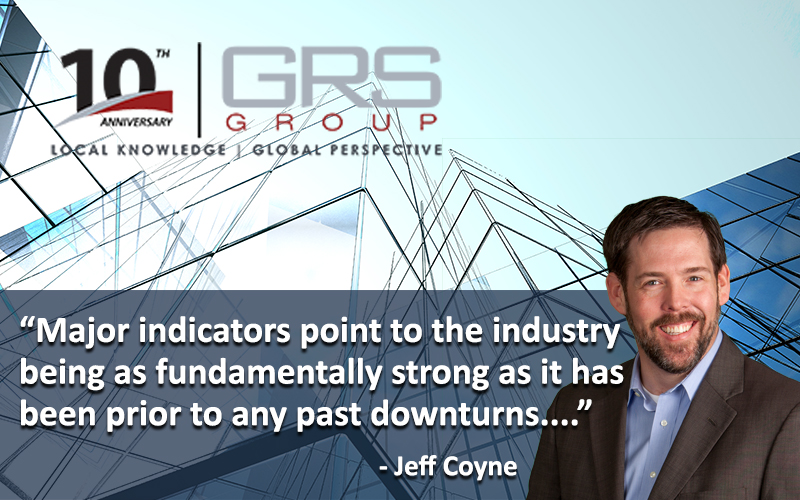Jeff Coyne is a senior vice president at GRS Group. He can be reached at 510.962.9534 or via email at [email protected]
Has commercial real estate finally grown up?
Instead of booming growth with construction oversupply and highly inflated transaction prices or a recessionary phase with cities sporting major vacancy rates and cranes lingering over abandoned projects, a recent Nareit report says that commercial real estate is now in a “mature phase”, the likes of which the industry has never experienced.
This mature phase is defined by supply and demand being in balance for a long period of time with very little excess demand (or oversupply). Vacancy rates, while low overall in most markets, aren’t declining or increasing at a significant pace. There is rent growth, but it has moderated to be in line with fundamentals.
As Nareit Economist Calvin Schnure plainly puts it: “This ‘mature’ phase’ of the commercial real estate market should not be confused with ‘late cycle’, as late cycle risks look much different from what we are seeing today. The most prominent warning flag would be overbuilding. This happens when construction gets too far ahead of demand growth, vacancy rates move higher, and eventually rents and property prices stop rising and even decline.
A second major late cycle warning flag is speculative growth of property prices, where prices rise faster than NOI and cause cap rate compression. Property price increases in recent years have been matched by rising NOI and suggest solid support from fundamentals rather than speculative froth. It’s true that cap rates today are low, but so are interest rates. The cap rate spread to Treasury yields, which measures the return above risk-free rates to real estate investors, remains comfortable.”
It’s almost as if this mature cycle is unique and a bit strange because there is so little worry. Some investors might be afraid that if things are going so well (too well?), and there has to be bad news down the road. Right?
However, it appears to be the opposite. Major indicators point to the industry being as fundamentally strong as it has been prior to any past downturns. In several cases over the last few decades there were already internal risks in commercial real estate when recession hit. So, we really don’t have any model that we can compare the current situation to, making it hard to predict what could cause a potential downturn.
Accordingly, the National Association of Real Estate Investment Trusts (Nareit) has a bright outlook for the REIT market in the coming year with results similar to 2019, where the overall sector saw a 27.9-percent total return in the first 11 months of the year. A growing economy with low interest rates, coupled with low excess demand means that the 2020 outlook bodes well for REIT investors and CRE investors, at large.
About GRS Group
On the leading edge of innovation in commercial real estate transactions, Global Realty Services Group provides its clients with unsurpassed expertise in the areas of Transaction Services, Title Insurance and Sustainability Solutions. With offices across the United States, Europe, and affiliates around the globe, GRS Group provides local market knowledge with a global perspective for institutional real estate investors, occupiers and lenders worldwide. The GRS Group team has evaluated and advised on over $1 trillion in CRE transactions.

